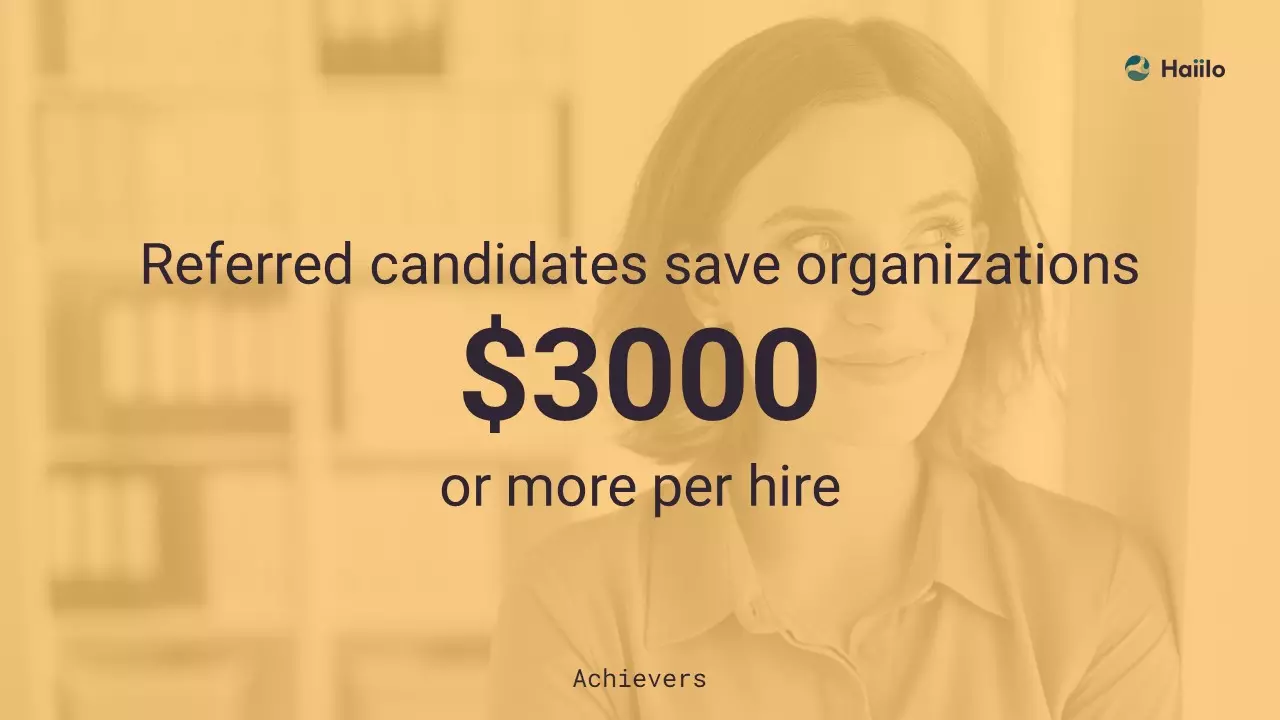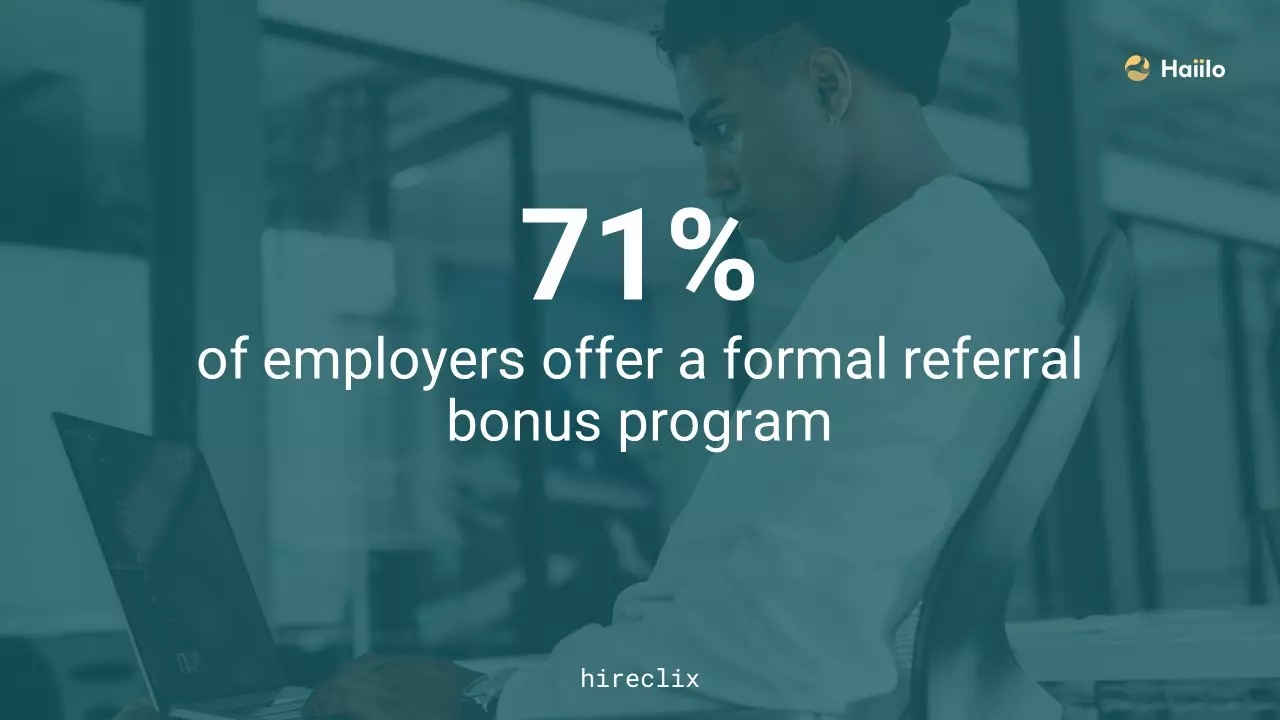Employee referral programs have been one of the favorite and most successful ways for employers to attract new talents to their organizations.
However, creating and managing a successful program is not easy. Companies need to take a strategic approach towards implementation of their first employee referral program.
In this blog, we will talk about why employee referrals are the best source of new candidates and how to implement an employee referral program that works.
Make implementing and executing an employee referral program easy with the right employee advocacy platform
Why Every Company Should Have an Employee Referral Program
It’s no secret – employee referrals are the best source of new hires. Today, most organizations, especially in the tech industry, have some kind of an employee referral program.
Remote and hybrid work make employee referrals even easier. Employees can refer people from all over the world, and it is only sensible to leverage your own employees to bring new high-quality candidates to your organization.
If you are still wondering whether a referral program is worth your time and money, we have prepared this article specifically for you. Here are the main reasons why you should start investing in it already now.
💡 Before we move forward, also check out our social recruiting guide!
1. Higher-quality candidates
Your existing employees know your company culture best. They know your talent acquisition challenges and understand very well what kind of talent you are looking for.
Furthermore, your employees probably have networks of people with similar skills and career orientations.
For that reason, referred candidates are usually the highest-quality candidates you can hire. According to research, 82% of employees rate employee referrals above all other sourcing options to yield the best ROI.

💡Also, learn how to build a positive workplace culture in your organization.
2. Lower time to hire
Many organizations today struggle to fill their positions in a timely manner. Not having a person in a crucial role can significantly hurt business performance.
Luckily, employee referral programs can significantly reduce the time needed for HR departments to fill open positions.
One research shows that the average time to fill a position without an employee reference is 60 days. Employee referrals take 35–40 days to fill a position.
💡 Also, learn how to boost employee engagement in your organization.
3. Lower cost to hire
Shorter time to hire usually means lower cost to hire as well. When the time to fill an open position is shorter, companies need to spend less money on job advertising, and talent acquisition teams spend fewer hours on a single job opening.
Organizations with successful employee referral programs often don’t even need to invest in other channels such as expensive job boards, LinkedIn, recruitment agencies, social media recruitment, and others.
Furthermore, they may not have to invest heavily in employer branding and recruitment marketing efforts in order to attract new talent to their companies.
This results in much lower expenses for HR departments. Some people predict that referred candidates save organizations $3,000 or more per hire.

4. Higher retention
Having an employee referral program can significantly impact your talent retention efforts. With the great resignation era, it’s more important than ever for employers to invest in employee retention.
There is a lot of research that proves variations in employee retention depending on the source of new hires:
45% of employees sourced from employee referrals stay for longer than 4 years, and only 25% of employees sourced through job boards stay for over 2 years.
Therefore, employee referral programs are not only about finding new hires and filling open positions. It’s about bringing the right people to the company and shaping a positive workplace culture.
💡 Check out 11 ways to attract and keep Millennials in the workplace.
5. Higher productivity
Referred candidates usually have an extra urge and motivation to prove themselves in the new organization. That’s why it’s not uncommon to see higher productivity among referred candidates.
One research proves that referred employees are more profitable for their employers by 25%.
Furthermore, research shows that referred candidates get onboarded more quickly than candidates from other sources. Also, they tend to start their jobs sooner than other hires: candidates from career sites start after 55 days; those found on job boards start after 39 days, and employee referrals start after 29 days.
6. Improved company culture
When bringing new people in, employers want to make sure that the candidates fit the overall organizational culture and core company values.
When there is a fit between employees’ beliefs and the organization’s mission, company culture becomes healthier and employee experience improves significantly.
Referred candidates tend to have similar beliefs to their referrers, which is why organizations with employee referral programs usually enjoy a better company culture.
How to Make Employee Referral Programs Work
Even though many organizations today already have employee referral programs, not all of them made it a successful part of their talent acqusition startegy.
Setting up and managing a successful program is not easy, and it requires a strategic approach, time, and devotion from multiple stakeholders.
When set up properly, however, the outcomes are fruitful.
Let’s take a look into a few best practices for making employee referral programs successful.
1. Be transparent, and communicate the benefits of referral programs
Many employees bring in their friends and acquaintances because they prefer working with people they already know. Others, however, may need a little push.
In the previous section, we talked about the benefits of employee referral programs and how referrals are the best source of new hires.
This is exactly what you need to communicate to your workforce. Being honest, open, and transparent about your talent acquisition challenges is the first prerequisite to making referral programs work. Then, explain to your people how they can help you eliminate those challenges and build a better company culture.
2. Make it formal rather than informal
According to HireClix, 71% of employers offer a formal referral bonus program. Others have informal referral systems.

Since formal programs usually see better results, one of the first steps towards making an employee referral program more successful is making it formal. To do that, you need to first define some rules and procedures.
💡 If you are looking to leverage social media for recruitment, check these 5 ways to make social media recruitment more successful!
3. Design the process and participation rules
Once you have decided to make your employee referral program formal, it’s time to define some internal processes and participation rules.
First, you need to define whether the program applies to all job openings. Sometimes, employers have referral programs only for those positions that are hard to fill.
Second, you may want to define whether a previously referred and rejected candidate counts as a referral for a new job opening.
Next, define when the bonuses are paid out. Some organizations pay the entire bonus upon 6 months from the hire, some a year from the hire, while other pay only after 90 days from the candidate’s start date.
In general, the fewer exceptions you have in your referral program, the better. The program should be easy to comprehend.
💡 Implementing new programs in organizations is not easy. Check out our change management guide!
4. Make it easy for employees to participate
One of the main reasons why some employee referral programs fail is the lack of visibility of job openings within an organization. Eliminating this is an absolute must for making your referral program work.
It is important to both update your employees regarding new job openings as well as make it easy for them to share the openings with their networks.
Having a central hub with all the openings and other employer branding content makes this process much more efficient and streamlined.
5. Provide good candidate experience
It takes one poor candidate experience for your employee to never refer a candidate again. Providing a good candidate experience during the entire selection process is what makes employee referral programs sustainable.
Furthermore, it’s not uncommon for referrals to fall into a “black hole.” The candidate is never contacted and the employee can’t find out what is going on. The employee is frustrated and embarrassed. Chances are he won’t refer the company to another person.
6. Gamify the experience and make it rewarding
Employee referral bonuses are the most effective incentive for employees, according to 71% of employers.
One survey reports that 90% of bonuses are paid in cash, with 10% of employers offering non-cash rewards. ERIN reports that the average cash bonus is $2500.
Setting attractive rewards is very important to keep employees engaged and motivated.
Furthermore, adding some gamification to the overall experience never hurts. If you have access to the right technology, you can set up a gamified referral program with leaderboards, points collection, and other fun activities.
The Importance of Technology in Making Referral Programs Work
Today’s workplaces are highly digital. Moreover, workplace technology is one of the most important factors of positive employee experience in the workplace.
Employee referral efforts need to be as digital as possible. These technologies not only make referring candidates much easier, but they also make HR and talent acquisition teams more efficient.
With employee communications and advocacy tools such as Haiilo, employers can:
- Easily share job openings to multiple internal communications channels with a single slick (such as Slack, Microsoft Teams, Yammer, Workplace, and others)
- Make it easy for employers to access job openings and share with their networks in a matter of seconds.
- Build a gamified experience and recognition program to boost employee motivation.
- Improve their overall employer branding efforts by enabling employee-generated content easily shareable to external audiences.
- Build specific internal audiences in order to share more relevant job openings with specific people and departments.
- Measure the impact of employee engagement with referral programs and get actionable recommendations for improvement.
If you want to learn more about how organizations use Haiilo to make their employee referral programs more successful, schedule a demo today!










